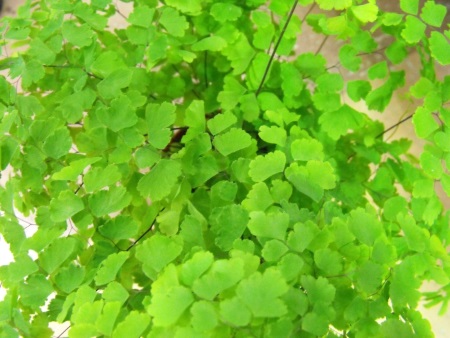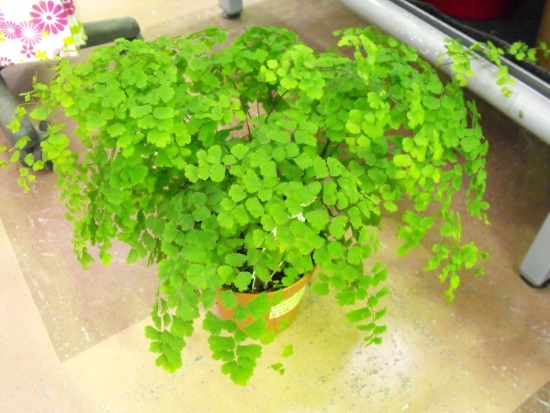





The reason the Adiantum raddianum is most suited for growing in a terrarium or within a conservatory is because it thrives in high humidity conditions that are difficult to provide within most rooms in a house.
This delicate species is in need of a consistent supply of moisture, from the atmosphere and it's soil. You'll find these growing near a water feature in some large buildings and thriving due to it being content with the amount of moisture it's getting and shade.
There are a number of these ferns grown from the Adiantum genus, with the A.raddianum being one of the most popular grown indoors. All of these (about 200 or more) named Maidenhair fern, have similar characteristics and share most of the same care needs to grow well.
How they look: The Delta maidenhair fern displays kind of triangular shaped arched fronds (collection of leaves) with many small pinnate leaves that are light green in color. The black wiry stalks are an interesting characteristic of this species. These stalks give the plant it's stiff upright tree appearance - although they do arch over once they've matured.


Insects: The most common insect problem is with scale which is noticeable when small brown shells are found of the fronds. Mealy bug can also be an issue.
Frond tips brown: Most likely cause here is dry air and lack of humidity. Increase humidity levels and consider other methods that can provide consistent humidity levels.
Pale fronds or scorch marks: Pale fronds and scorch marks usually appear when the plant has been exposed to too much sunlight. Fronds also turn pale when the fern is lacking fertilizer.
Fronds dying quick: This is usually caused by lack of water. Water the plant thoroughly and mist the leaves frequently in case dry air is also a problem.
Copyright © www.100flowers.win Botanic Garden All Rights Reserved